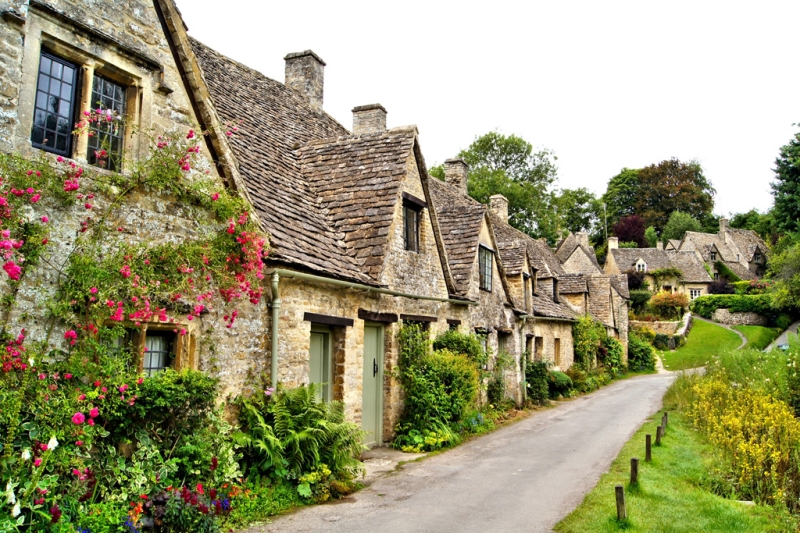
You shouldn’t judge a book by its cover, says popular wisdom. And the country – according to its capital, an experienced traveler will add and he will be right. In Great Britain, the contrast between the metropolis and the countryside is particularly noticeable. Tiny cities are so cozy that you don’t want to leave them. So, where can you go for breathtaking views, gingerbread houses, the freshest fish and chips and the real “Foggy Albion”?
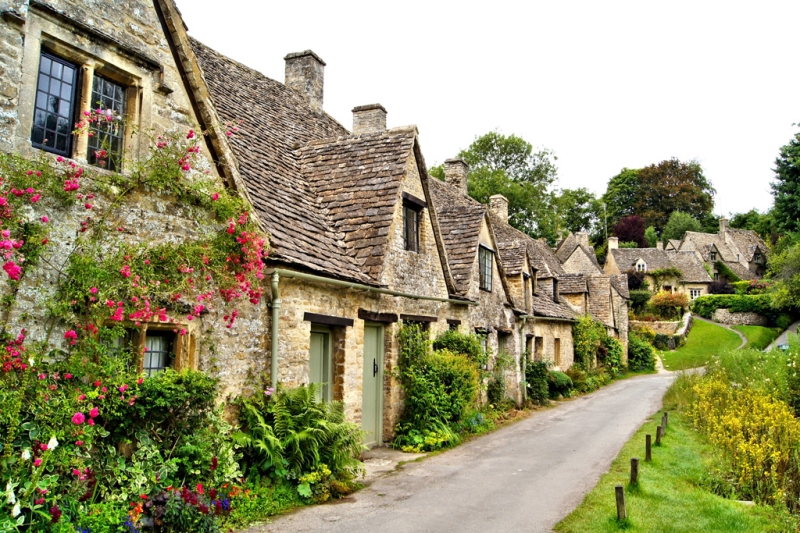
Biburi village: honey houses on water meadows
If there is anything more classic in the United Kingdom than fish and chips, it is the village of Bibury. Small houses twined with wild grapes, green hills, neat streets and lush bushes transport you into a real fairy tale. And guidebooks, without undue modesty, call Bibury “the most beautiful village in England.” It is located in the Cotswold region, which is considered a protected area that has preserved its original appearance. To be more precise, two hours northwest of London.
The history of Biburi dates back more than the 18th centuries; during excavations in these places, evidence of the presence of the Romans was found. Most here are constructed from oolite shell rock, hand-mined from local quarries. The material is expensive, so it is treated with care. It was thanks to oolite that the buildings acquired a uniform honey hue.
The main attraction of the village is Arlington Row. The houses on it were built back in the 14th century; 300 years later, representatives of a popular profession in the region – weavers and weavers – moved here – whose descendants still live in Biburi.
The town has two traditional pubs serving rainbow trout from a nearby fish farm. For a complete immersion in English classics, you can stay at the local Bibury Court Hotel. True, the status of “the most beautiful village in England” played a role. During the season this place is filled with tourists. The popularity of Bibury is also added by the fact that it was here that the film about Miss Marple was filmed, and the landscapes of the village appear in the films “Bridget Jones’s Diary” and “Stardust”.
The most convenient way to get to the gingerbread houses of Biburi is by car. The journey from London will take two hours.
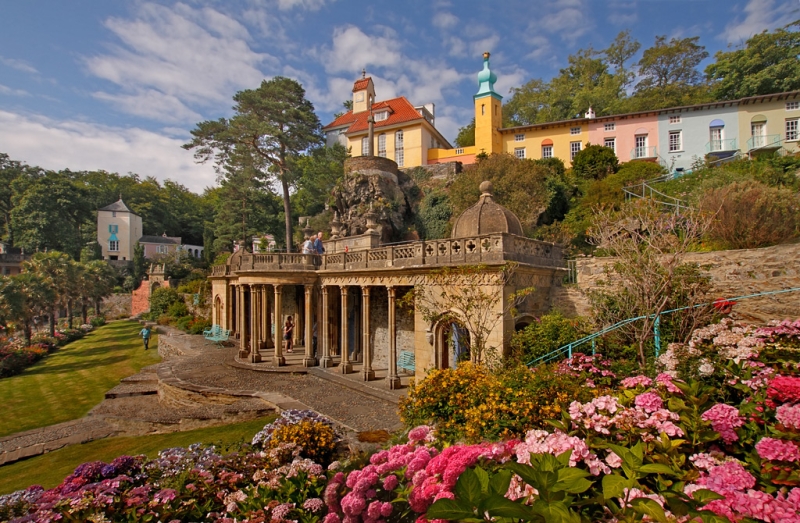
Portmeirion – the most Italian village in Britain
Not far from the Irish Sea there is a cozy place called Portmeirion, where no one has ever lived. On a typical rocky cliff in Wales rise buildings that have no connection with reality: bright, toy-like, comical and Italian in style. At the same time, tourists willingly come here, film shootings take place from time to time.
The village appeared between 1925 and 1975. Architect Clough Williams-Ellis bought the land and decided to create a city in the postmodern style on this site. As a result, many buildings look like folly,
that is, they are decorative in nature and built only for decoration.
The city has a huge number of arches that frame surreal landscapes like frames. And there is nothing left to do but take out your phone and take a photo for Instagram. The well-kept grounds of Portmeirion, planted with exotic plants, contain cafes, shops, souvenir shops and small hotels.
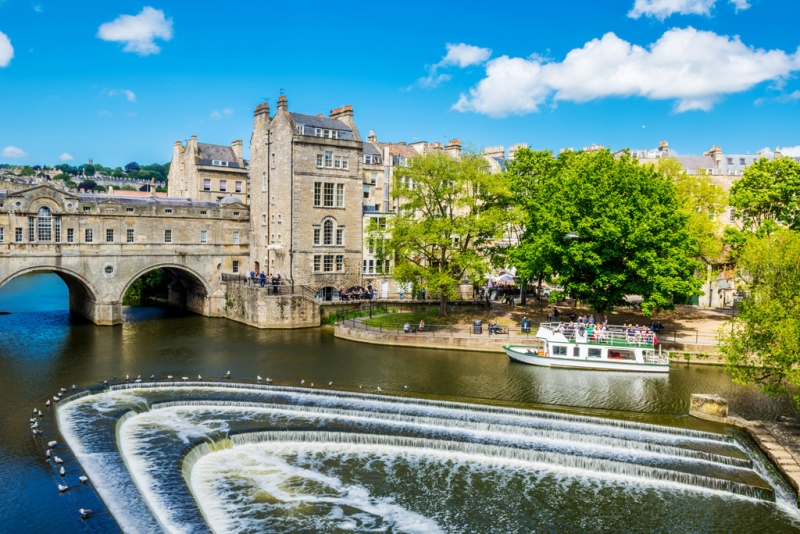
Bath: thermal springs and walks with Dickens
We move to the West of England: to the place where 2000 years ago the Romans discovered hot mineral springs and built the famous Roman Baths. This is the city of Bath, today better known as a first-class balneological resort.
Here you can take a hot mineral bath in the modern Thermae Bath Spa and admire the magnificent views of the city from the rooftop pool.
However, Bath is famous not only for its balneological procedures. Several centuries ago, holidays at the resort could only be enjoyed by high-ranking officials; Charles Dickens, Laurence Sterne and Daniel Defoe loved to visit it. Writer Jane Austen lived and worked in Bath. The visiting card of the city is the Pulteney Bridge on the River Avon, built in 1773. The bridge attracts travelers not only with its spectacular appearance and beautiful surrounding landscapes.
And the city is also considered the birthplace of airy “Bath” buns. There is a Sally Lunn’s themed museum here. During the excursion, you will be told the amazing story of their appearance, and will also be offered to taste baked goods.

In Polperro for fresh fish and views of the English Channel
We slow down the passage of time, order one of the best fish and chips in England with a pint of ale and enjoy the view of the English Channel. A kind of minimum program for a guest of the fishing village of Polperro, in the South-West of England.
Despite the mentions in guidebooks, this place has not yet been trampled by tourists – the village seems to be closed from the tide and time into the rocks of the gorge. It was registered as a fishing settlement in 1303, but there is evidence that as early as the 12th century, smuggled foreign goods were brought here to avoid high taxes.
Until the 1960s, fishing was the main activity of the local population, but then the catch decreased and the city had to reorient itself. But nevertheless, 12 fishing vessels leave the local port every day to fish. Flounder, scallops, crabs, monkfish, pollock, cod and sea bass, beloved by the locals – you can taste all this in numerous Polperro restaurants.
What to do with yourself when all kinds of fish have been tried, and all sorts of ale have been drunk? Without hesitation, go look at the streets and houses of Polperro, and then along the well-trodden paths along the cliffs near the sea.
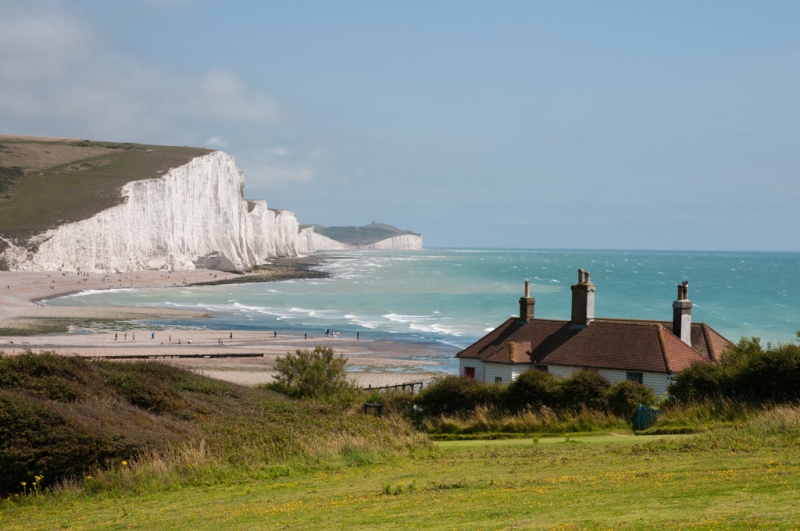
The port city of Dover: to the ends of the world
The phrase “foggy Albion” has long been considered the second name for England. In order to understand the etymology, it is worth going to Dover. The city cannot be called a tourist city; it is rather a transit point for people waiting for the ferry to France. Here is the shortest distance between the banks (about 35 km),
and in good weather the coast of France is visible to the naked eye.
The city is famous primarily for its huge white cliffs with a high chalk content, the height of which reaches 107 meters. Chalk cliffs are not uncommon in England but those of Dover are the most popular. There is a version according to which the word “Albion” comes from a Celtic root that meant “white”. Somewhat later, the Romans began to call England “albus” (also meaning “white”),
because, approaching its shores, they saw the huge white cliffs of Dover, reminiscent of icebergs.
At the top of one of them stands the ancient Dover Castle, whose history goes back more than 2000 years. Its construction was dictated by the need to repel numerous invasions from continental Europe. As a result, Dover became the most powerful and fortified of all European fortresses.
The journey from London to Dover takes an hour by train, two hours by bus.
A large selection of hotels is presented on OneTwoTrip.

